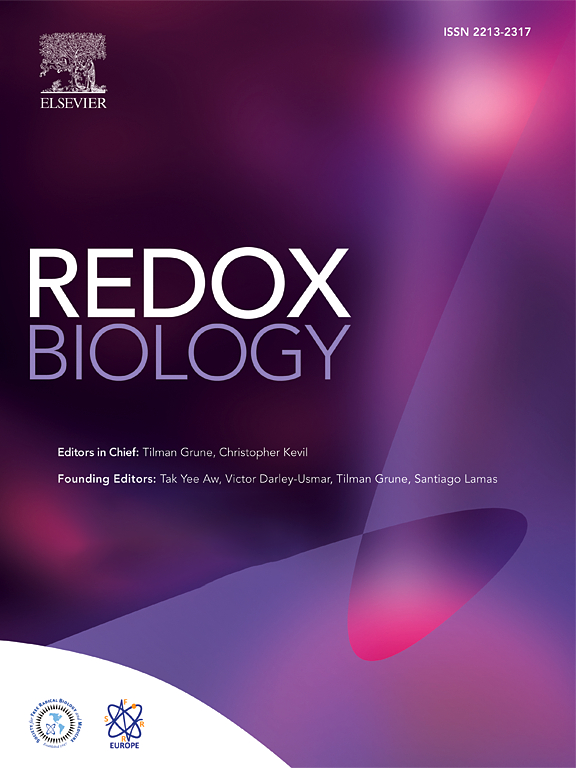Melatonin rescues cell respiration impaired by hypoxia/reoxygenation in aortic endothelial cells and affects the mitochondrial bioenergetics targeting the F1FO-ATPase
IF 10.7
1区 生物学
Q1 BIOCHEMISTRY & MOLECULAR BIOLOGY
引用次数: 0
Abstract
Melatonin is evaluated as a potential molecular therapy to counteract mitochondrial dysfunction caused by hypoxia/reoxygenation (H/R) in aortic endothelial cells (pAECs). The mitochondrial permeability transition pore (mPTP) opening undergoes a desensitizing action coupled with a reduction of superoxide anion production in mitochondria treated with melatonin. The effect on mPTP has been attributed to the direct interaction of melatonin with the hydrophilic F1 domain of Ca2+-activated F1FO-ATPase. Mutual exclusion analysis highlights an overlapping binding site between melatonin and the specific F1 inhibitor NBD-Cl. The results are corroborated by melatonin inhibition of ATPase activity of the purified F1 domain in the presence of Ca2+, but not in the presence of natural cofactor Mg2+. Moreover, the impairment of bioenergetics parameters in pAECs metabolism and the increase of oxidative stress arising by H/R injury have been rescued in cells protected by melatonin treatment.

求助全文
约1分钟内获得全文
求助全文
来源期刊

Redox Biology
BIOCHEMISTRY & MOLECULAR BIOLOGY-
CiteScore
19.90
自引率
3.50%
发文量
318
审稿时长
25 days
期刊介绍:
Redox Biology is the official journal of the Society for Redox Biology and Medicine and the Society for Free Radical Research-Europe. It is also affiliated with the International Society for Free Radical Research (SFRRI). This journal serves as a platform for publishing pioneering research, innovative methods, and comprehensive review articles in the field of redox biology, encompassing both health and disease.
Redox Biology welcomes various forms of contributions, including research articles (short or full communications), methods, mini-reviews, and commentaries. Through its diverse range of published content, Redox Biology aims to foster advancements and insights in the understanding of redox biology and its implications.
 求助内容:
求助内容: 应助结果提醒方式:
应助结果提醒方式:


